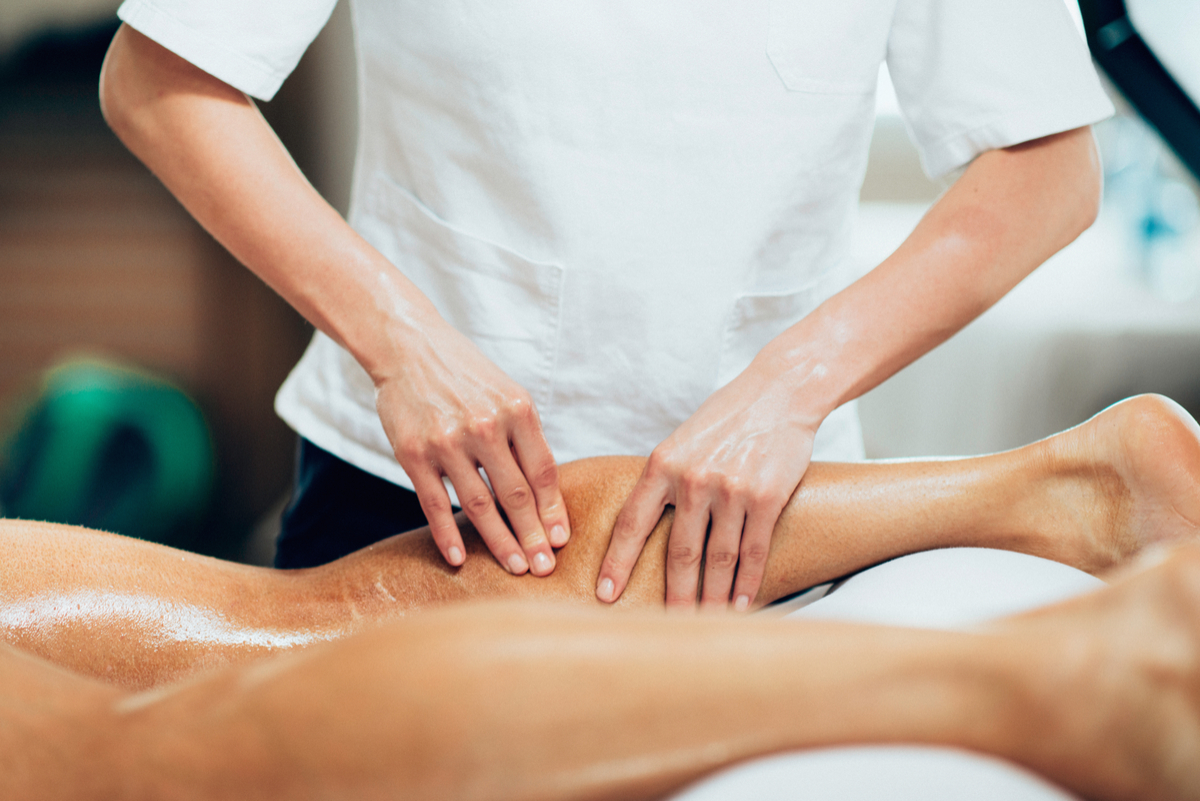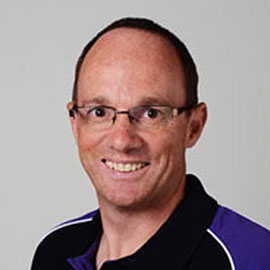Massage therapists and other professionals who practice bodywork do amazing things for people. They can reduce muscle tension, improve circulation, stimulate the lymphatic system, lower stress hormones, increase joint mobility, improve flexibility, enhance recovery from injury … the list goes on. Unfortunately, this ‘do good’ profession can come at a price.
Massage is a physically demanding career. It involves repetitive movement that often puts biomechanical strain on a practitioner. When becoming a massage therapist it’s hugely important that you factor self-care into your working day. Stretching and strengthening is your ticket to a long-term, sustainable career, so give self-care a high priority.
It’s recommended that you establish an injury prevention strategy that combines good body mechanics, regular stretching, aerobic exercise and training for functional strength.
To break it down in a more targeted way, you should design a strategy around the areas in which injury are most common; the neck and shoulders, back, arms and hands.
Neck and shoulders
While much of your strength as a massage therapist comes from your legs and core (rather than your upper extremities), massage therapists still use their necks during every session. In fact, neck and shoulder pain is one of the most common practitioner-related complaints.
When performing massage it’s easy to elevate and protract the scapula which can lead to soreness in the trapezius and rhomboid muscles, as well as tightness in the pectoralis major and minor. The head, too, can become forward flexed, rotated or laterally flexed, putting added pressure on the neck musculature. Additionally, improper head positioning can put the cervical spine at risk of disc pathology.
Preventing neck and shoulder injury
To prevent neck pain it’s important to strengthen the deep neck flexor muscles. This will allow you to support your head when looking down or leaning forward. Simply performing chin retraction exercises regularly throughout the day can be enough, or to increase the intensity, perform the exercise on all fours to work against gravity. Other stretches you can do include:
Side neck stretch – push your shoulders back and tilt your head towards one of your shoulders. Place your same side hand on the top of your head and gently pull down.
Forward neck stretch – place both hands on the back of your head and pull your head forward until your chin is nearly touching your collarbone.
Alternate neck stretch – turn your head slightly to your right and with your hands on the back of your head slowly pull forward until you are looking at your right armpit. Repeat on the other side.
For strengthening your shoulders you can perform Lewis Circles which will engage muscles in the upper thoracic, neck and shoulder area. Start by placing your fingertips gently on the tops of your shoulders and bring your elbows in towards the front of your chest. Lift your elbows up to your ears and then lower your elbows out to the side in a circular motion. As you bring your elbows back to your chest lower your chin to your chest to engage the cervical area. Keep it slow and controlled and repeat after every massage session.
Back
It’s common for a massage therapist to lean over a table while the client lies prone (face down) or supine (face up). This means that you can be constantly bent over, leading to back problems.
Pay attention to table height, and don’t be afraid to mix it up once in a while. Try positioning your client in a side-line position or have them sit in a chair. Also play around with how you position yourself when providing long strokes that cause you to reach down.
Preventing back injury
As a massage therapist you know a thing or two about foam rollers and lacrosse balls. So why aren’t you using them! Using a foam roller for quadratus lumborum release or thoracic extension on the floor can feel fantastic after you’ve performed several massages. And lacrosse balls are perfect for hitting those trigger points in your trapezius and rhomboids!
If you don’t have these things handy, take a seat after every massage and lean forward to put your hands on your feet. Feel the stretch and repeat 20-30 times. You may like to consider Superman Holds and yoga, too. And make sure you get massages too!
Arms and hands
Doing strengthening exercises for your arms and hands makes sense, right? After all, your arms and hands are the part of your body you use the most during a massage.
Having strong arms and hands is an important part of being a good massage therapist but so too is knowing when to rest your arms and hands. They work hard and deserve some recovery time.
An injury/reinjury cycle is a major contributor of arm and hand pain. The bottom line is, if you have achiness, tightness or soreness, or any pain in your body following a massage, don’t ignore it. Either stretch it out or rest it.
Preventing arm and hand injury
If you’re just starting out on your massage journey you will need to get your arms and hands ready for years of repetitive strain. If you’re studying with Discover Massage Australia we’ll cover this as part of your course.
If you’ve been in the industry for a long time your concentration should be more on strengthening your upper extremity so as to not overuse the muscles.
For your arms
The Bug is a pilates arm workout that requires no equipment and can be easily performed following a massage. Stand with your feet hip-width apart, bend your knees slightly and bend forward at the waist. Let your arms hang down in front of you toward the floor, shoulders down. Pull your elbows up at the side and squeeze together your shoulder blades. Hold, lower and repeat 20 times.
For your wrists
Flex your wrists after each massage, using your other hand to push your fingers back towards the wrist. Keeping gentle pressure on your hand, extend your arm out in front of you. You should feel the stretch in the extensors carpi radialis brevis and longus as well as extensor digitorum. For a more intense stretch, curl the fingers of your hand into your palm before flexing. Hold for 30 seconds.
For your fingers
Squeezing different size squeeze balls is an easy way to strengthen your finger muscles. Squeeze for 10 to 20 seconds, release and then rest for 10 seconds. Repeat 10 times. You can also perform thumb oppositions in which you press the tip of your thumb into the tip of the other four fingers, holding for five seconds.
Click here for more easy hand exercises.
Looking after yourself
Massage therapists are naturally nurturing, intuitive individuals. But to dedicate your career to helping others you must take care of yourself as well. Make time for self care after every massage and you can better care for your next client.
Think you can be disciplined enough to add self-care into your daily practice? Discover Massage Australia teaches you the smarter way to massage, not the harder way. Enrol now and start on a long-lasting career journey.

